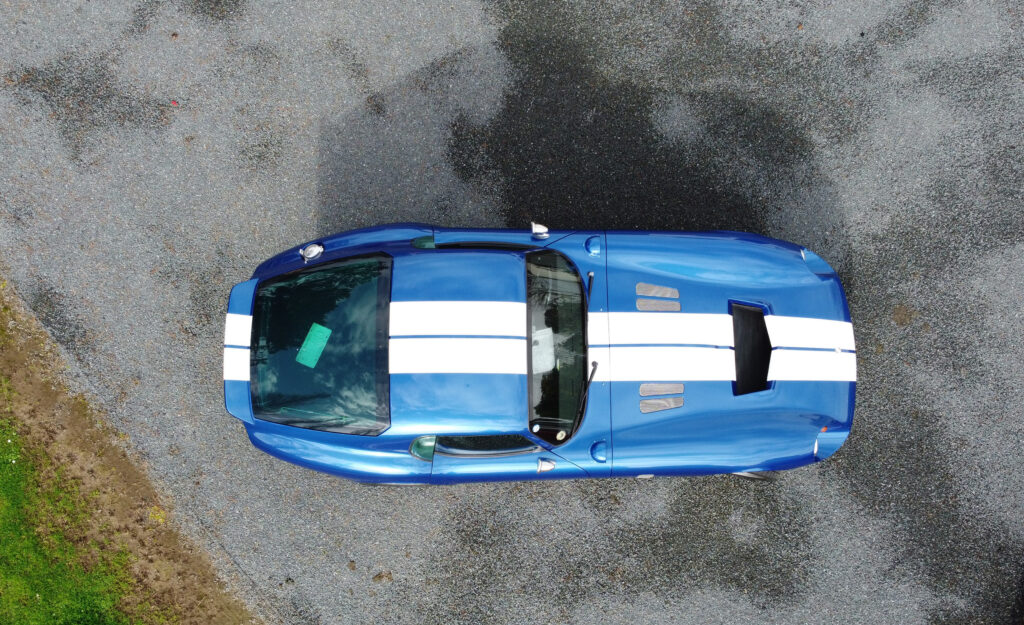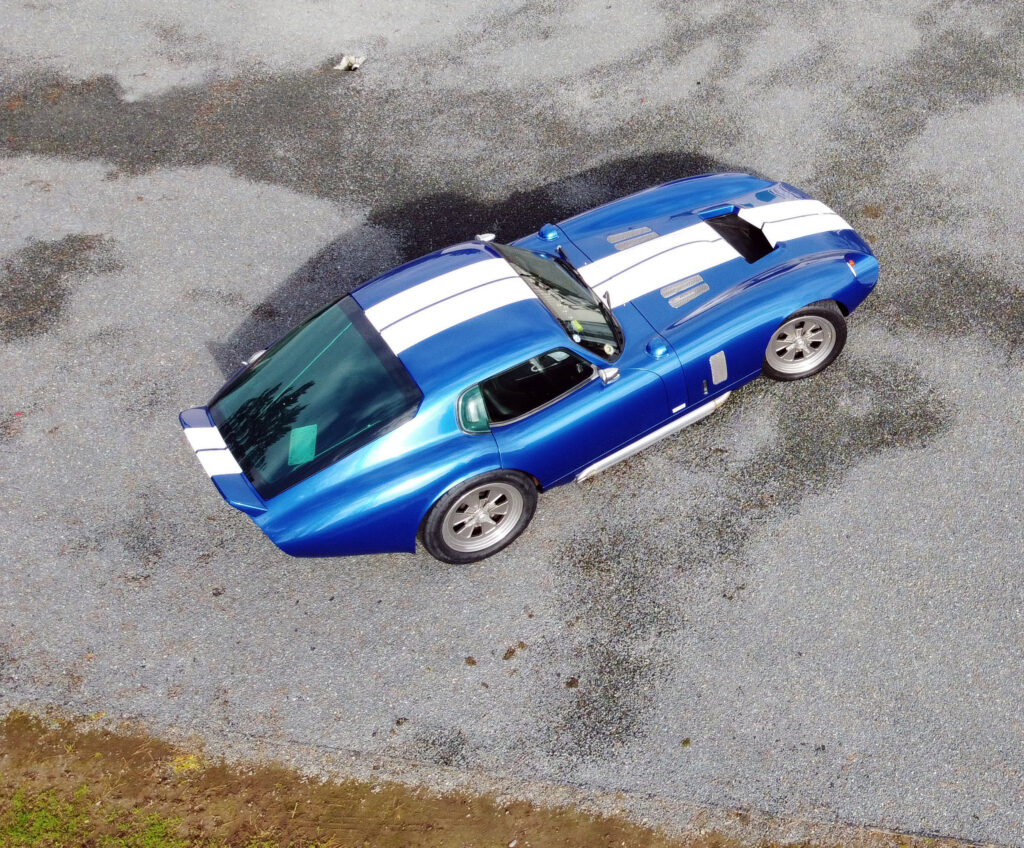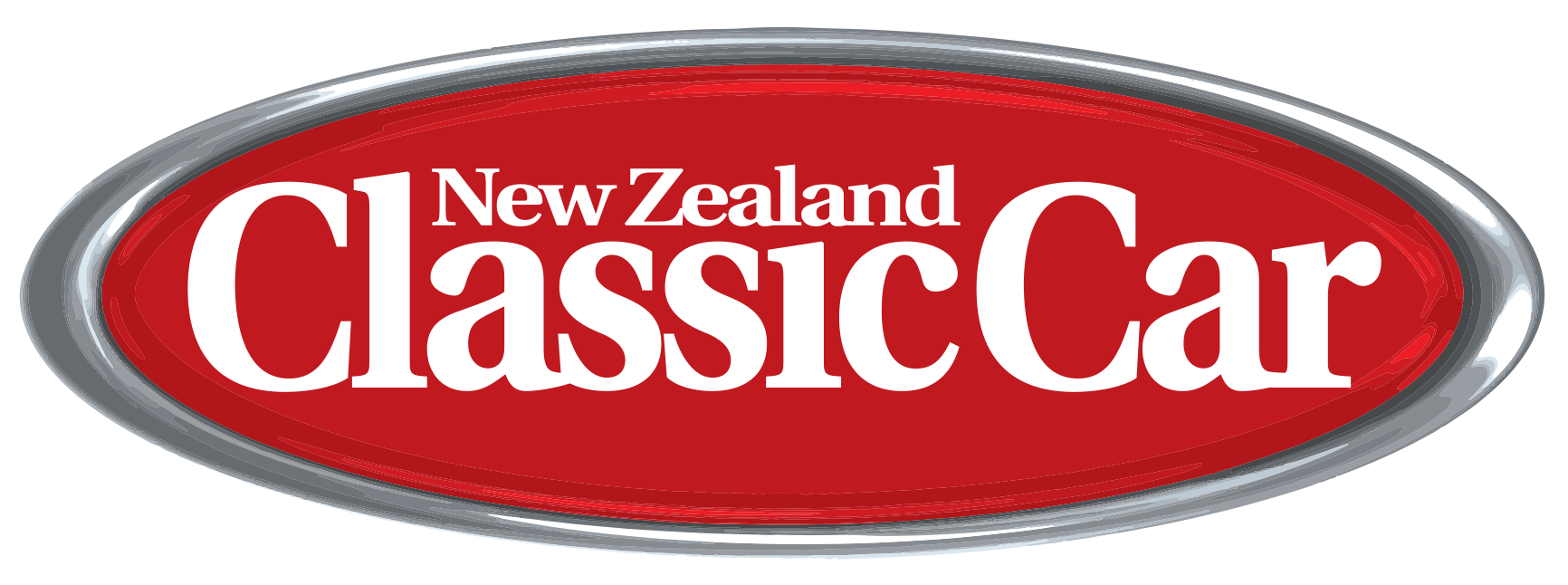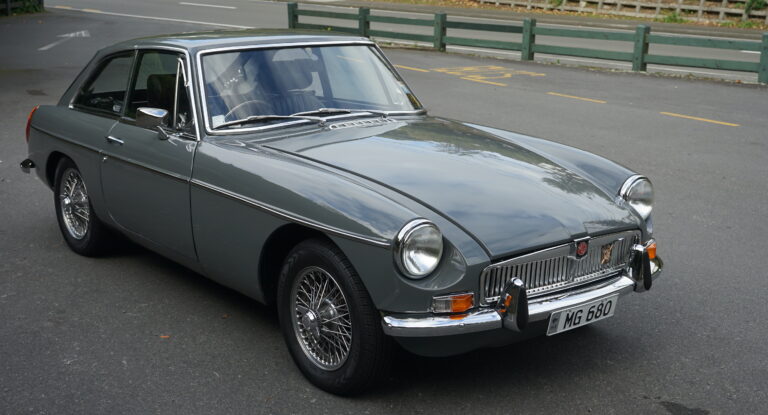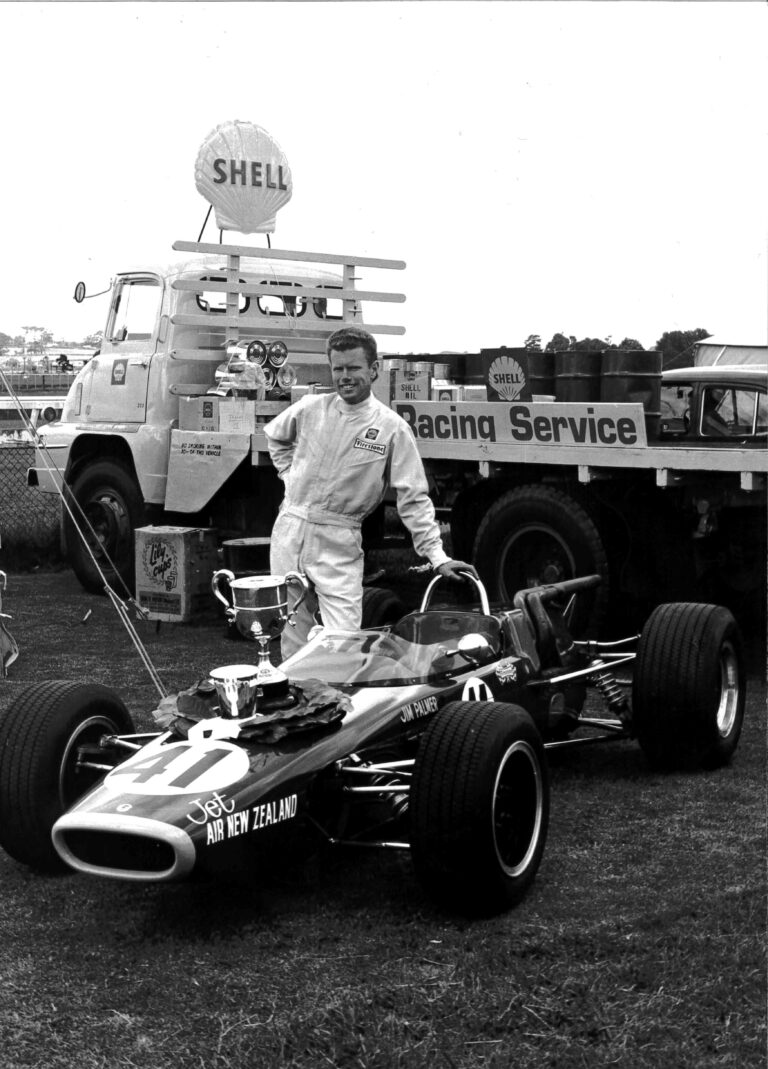Carroll Shelby appreciated Superperformance’s tribute to his own coupé so much he added his name to it
By Patrick Harlow
Photographs: Patrick Harlow
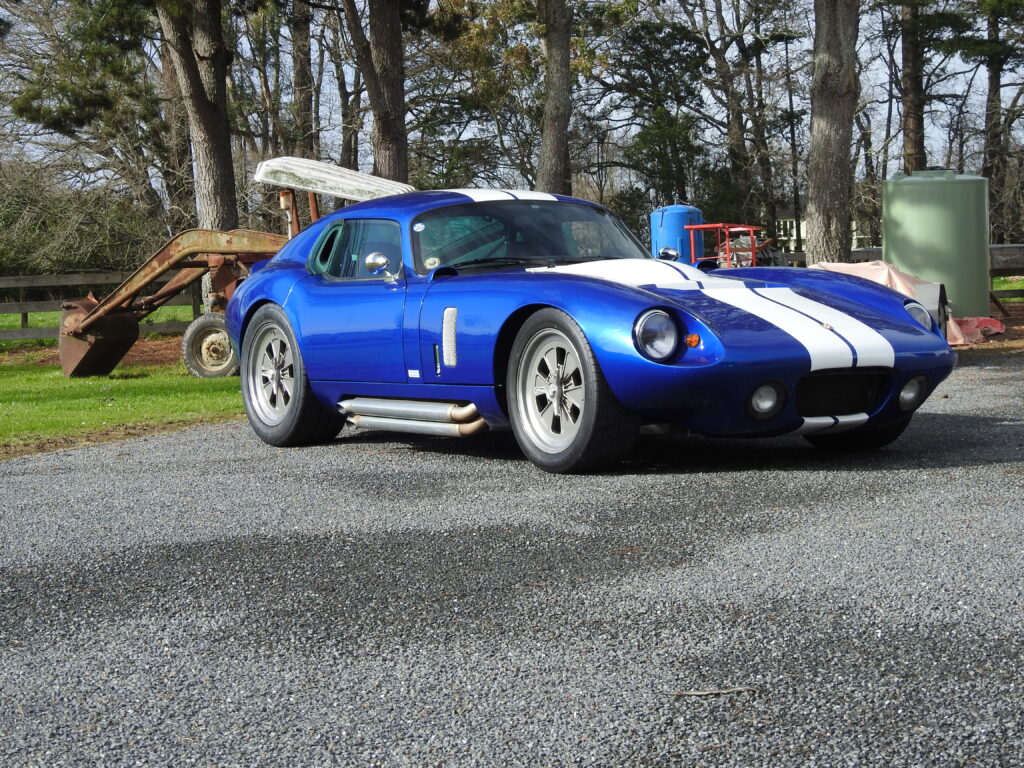
Ferrari was one of the first big auto manufacturers to start going after small companies that were making replicas of Ferrari cars.
This made news headlines back in the mid-’80s when Ferrari sued McBurnie Coachcraft, which manufactured the Ferrari Daytona Spyder that starred in the TV series Miami Vice (1984–1990). Ferrari considered the building and selling of replicas to be an infringement of its brand name and intellectual property. Having won that first lawsuit, it went after other replica manufacturers in all corners of the globe.
In recent years, other car manufacturers, such as Jaguar and Aston Martin, have followed Ferrari’s example. Interestingly, apart from Ferrari, the mainstream manufacturers had pretty much ignored the replica builders and only started pointing their lawyers at them when they decided that they wanted to start building their original classics again as a continuation series, many of which cannot be made road legal.
In the USA, after years of creating and modifying Mustangs and a range of other cars, Carroll Shelby decided in the early ’90s that he wanted to restart building Cobras. Naturally, to secure his market he had to get rid of the opposition, so he started threatening replica manufacturers with court action. In 1992, Shelby even sued Ford over the rights to the Cobra name. After a few expensive court battles, Shelby and Ford settled out of court.
Unfortunately, many small manufacturers did not have the capital for a sustained court battle and closed their doors immediately. In 2000, Shelby took the largest two manufacturers of replica Cobras and Daytonas to court — this Daytona being essentially a coupé version of the Cobra, designed to take the Ferrari GTO in the GT class. It just used the same name as the Ferrari’s famous front-engined grand tourer.
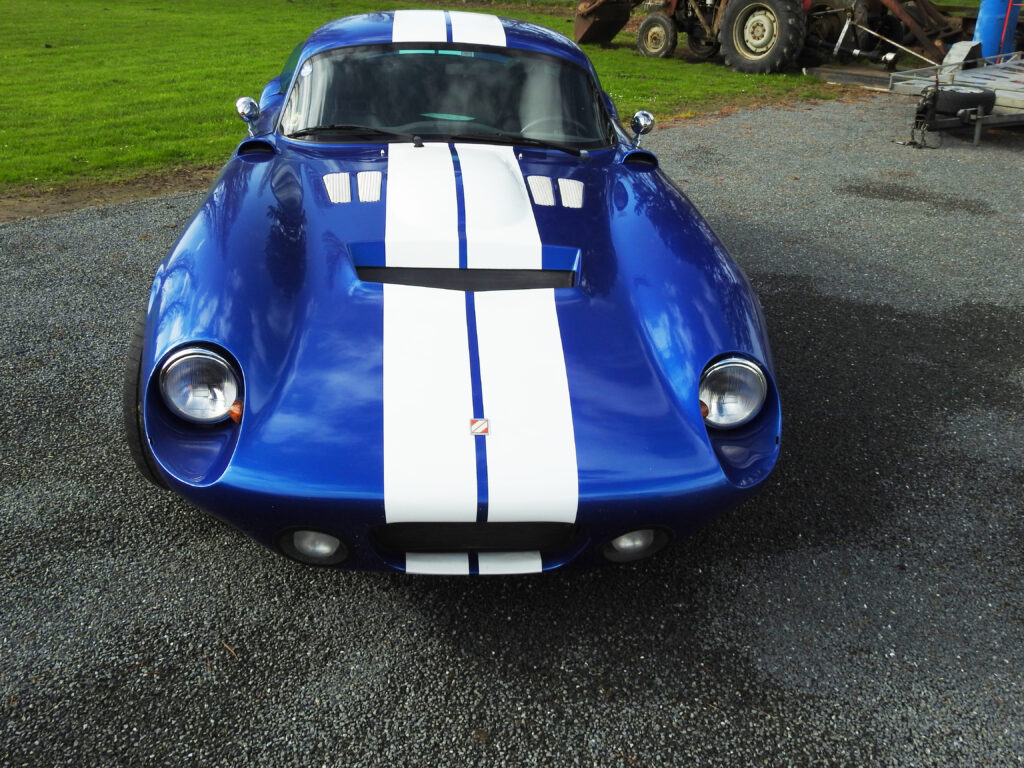
Targets
Shelby’s targets were Superformance — a South African company that wanted to sell its versions of these cars in the US — and the US-based Factory Five. Their defence was that the name and shape of the Cobra car were abandoned when Shelby American ceased production of these particular models back in the 1960s.
Shelby countered with: “We spent millions of dollars creating the name and the car and winning the world championship. These knock-off-car guys don’t deserve the credit or the profit for what my team and Ford accomplished in the ’60s.”
Superformance painted an even bigger target on its back by also producing a version of Shelby’s Daytona coupé. Other cars in its production stable were Mk1 GT40 and 1962 Corvette Grand Sport replicas, but we’ll focus here on the Daytona.
Superformance started producing a Cobra roadster replica in 1992, calling it the Superformance Mk III. By 1996, it was shipping the Mk IIIs all around the world, demand for the car increasing exponentially each year.
By 1996, CEO Jim Price, flush with the success of the roadster, decided to add the coupé to the production schedule. To give the car a bit of historical connection, Jim decided to approach Pete Brock, the original designer of the Daytona coupé. He invited him to reengineer the car for modern times. Bob Negstad, who designed the original suspension on the 427 Cobra and the Ford GT40, also provided input to the creation of the new car. The opportunity to recreate a classic car with a clean sheet, with the help of the talented original designers, was a whole lot smarter than trying to modify something out of date.
It also worked for the designers.
“It’s seldom that a designer has the opportunity to go back and refine one of their original designs,” Brock said. “Jimmy Price and Superformance allowed me that opportunity in 1999 when I visited their amazing factory and saw what incredible quality was possible for a limited-production version. Of all my personal cars, my Daytona coupé is my favourite.”
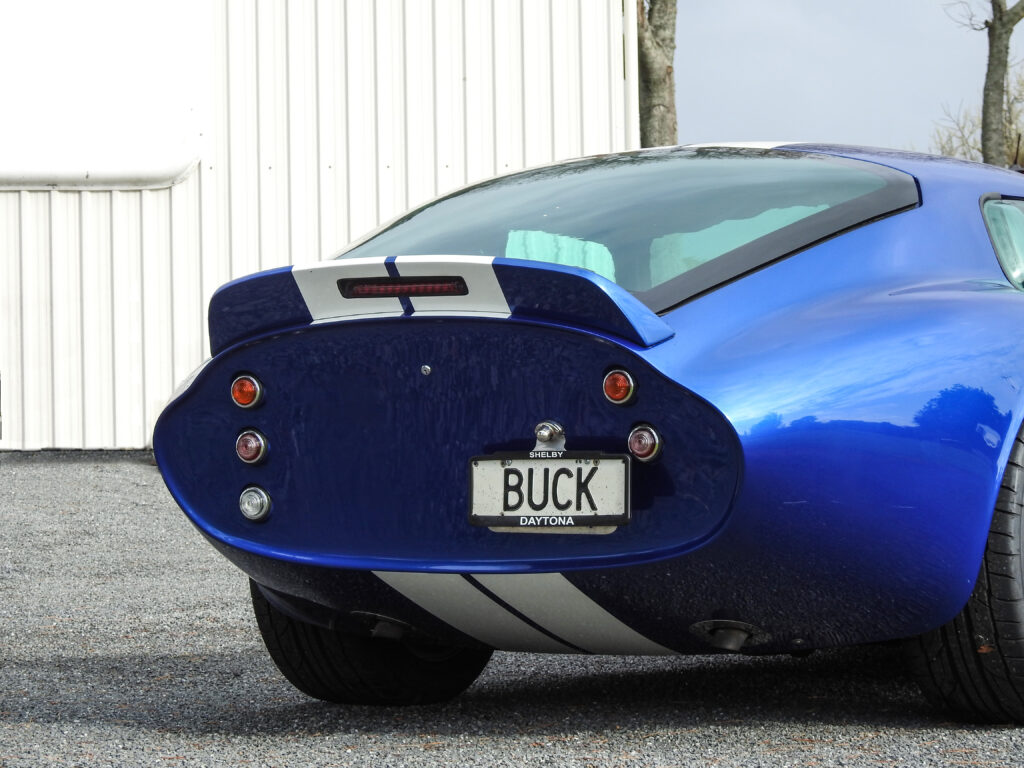
Perfect copy
The resultant car looked almost identical to a Daytona coupé, even though they did not share a single line or dimension. It had a fibreglass body rather than aluminium. The drivers of the original Daytona complained about burning their ankles on the aluminium side panels, which acted as a heat sink for the exhaust. The modern rendition does not have that issue. Instead, it has air conditioning, carpet, power steering, and, wonder of wonders, sound deadening.
‘Sound deadening’ in this instance is a relative term. Although the V8 growl may be more subdued than in a race car, I would never call it quiet. In this regard it is all ‘Cobra’. The good news is that, while the creature comforts were improved, the classic lines and interior were retained, with such items as chrome-ringed dials and a three-spoke period steering wheel.
Superperformance’s Daytona was originally called the ‘SPF Brock coupé’, but since 2009 it has been called the ‘Shelby Daytona coupé’. We will get to the reason for the name change shortly. The coupé is purchased as a rolling chassis/body complete with trim fitted to a factory-finished state but minus the engine and gearbox. This means that the cars can be imported into almost any country. It is up to the owner to fit an engine and a gearbox that comply with the emission standards of that country.
Being a relatively small company, Superformance does not have the financial resources to crash-test its cars or add the technology and warranties required for brand-new cars in many countries. In most instances, any compliance costs are covered by the new owner, who has the cash and enthusiasm to get the car registered for the road where they live.
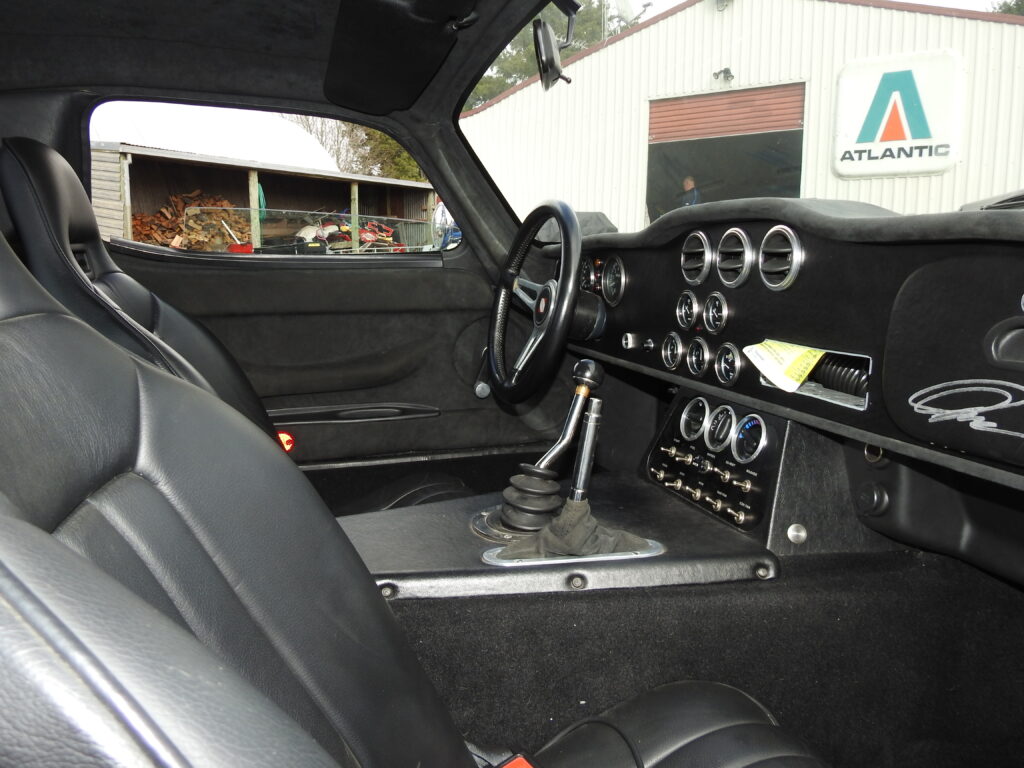
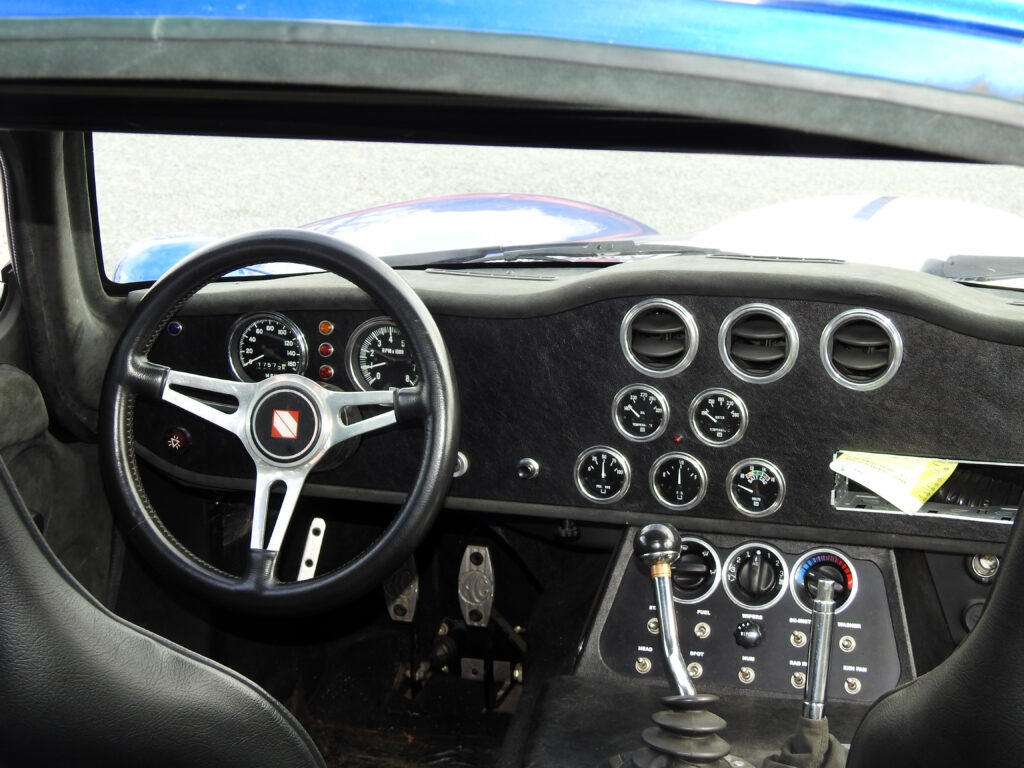
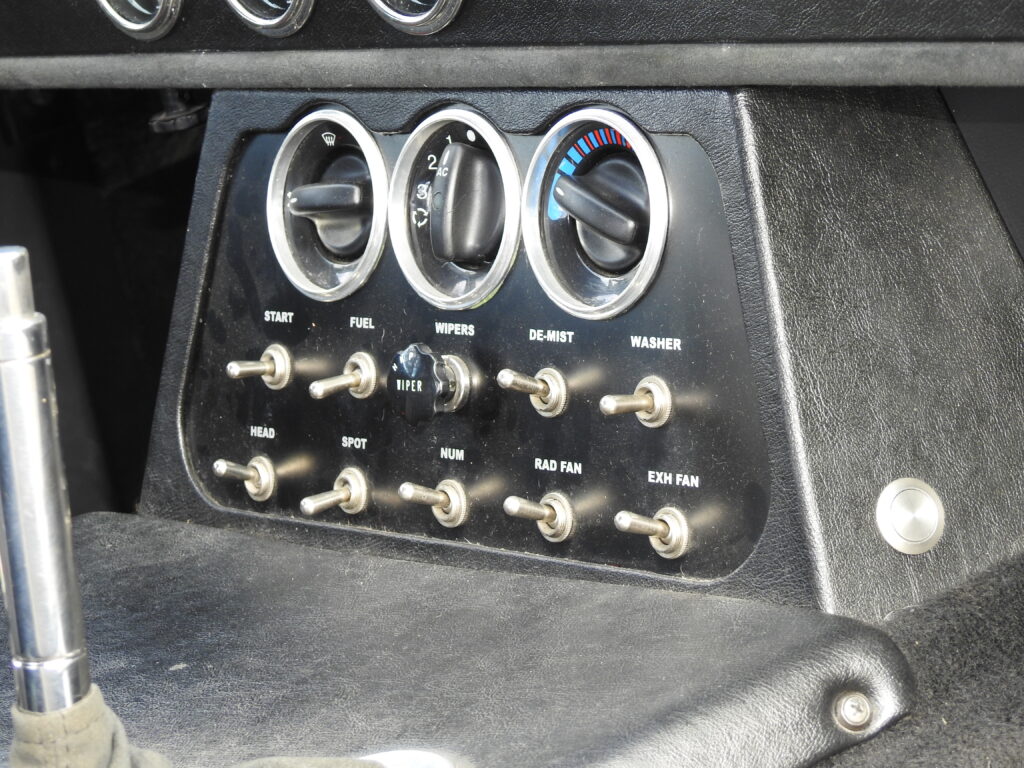
Full house
Getting back to the court battle between Shelby American and Superformance in 2001, at the time, Superformance had already produced more than 1000 Mk IIIs, and the SPF Brock coupé was in production. To cut a long story short, Shelby American lost the case. The US court dismissed Ford and Shelby’s counterfeiting claims, stating that Shelby couldn’t establish that the Cobra shape was distinctive enough to merit protection. Replicas of the legendary Shelby cars could still be built, either as kits or turnkeys, as long as the trademarked names of Shelby and Cobra were not used.
This was not a big deal as Superformance had not been using the trademarked names anyway. Shelby accepted this loss quite well, following the adage: “If you can’t beat them, then join them”. Using its protected trademarks, the Shelby company started producing its own Cobra roadster, calling it the “only genuine Shelby Cobra” with Shelby chassis numbers and badges.
As for the coupé, Shelby’s company, Shelby Distribution USA, was so impressed with the Superformance car that it presented Carroll Shelby with an SPF Brock coupé as a gift in 2008. This proved a good way to get on the boss’s good side. The following year, Shelby Distribution USA and Superformance joined forces, forging an agreement for the US company to buy cars as a rolling chassis from South Africa. Shelby Distribution would add the engines, gearboxes, and various other enhancements, including the option of an aluminium body, and sell them as a continuation of the original Daytona coupés.
Shelby USA said, “Every CSX 9000 series Shelby Cobra Daytona coupé will be listed in the Shelby World Registry,” — making this new addition to Carroll Shelby’s stable of sports cars a collector’s dream. “The new coupé will feature Shelby signature door handles and seat covers, and the stopping power for the powerful coupé will be provided by Shelby-branded brakes.”
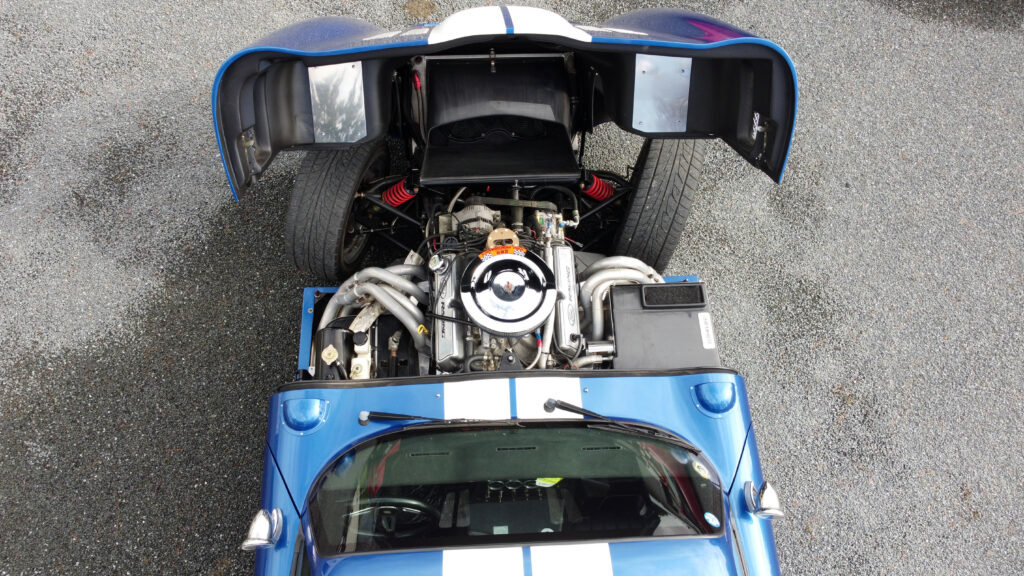
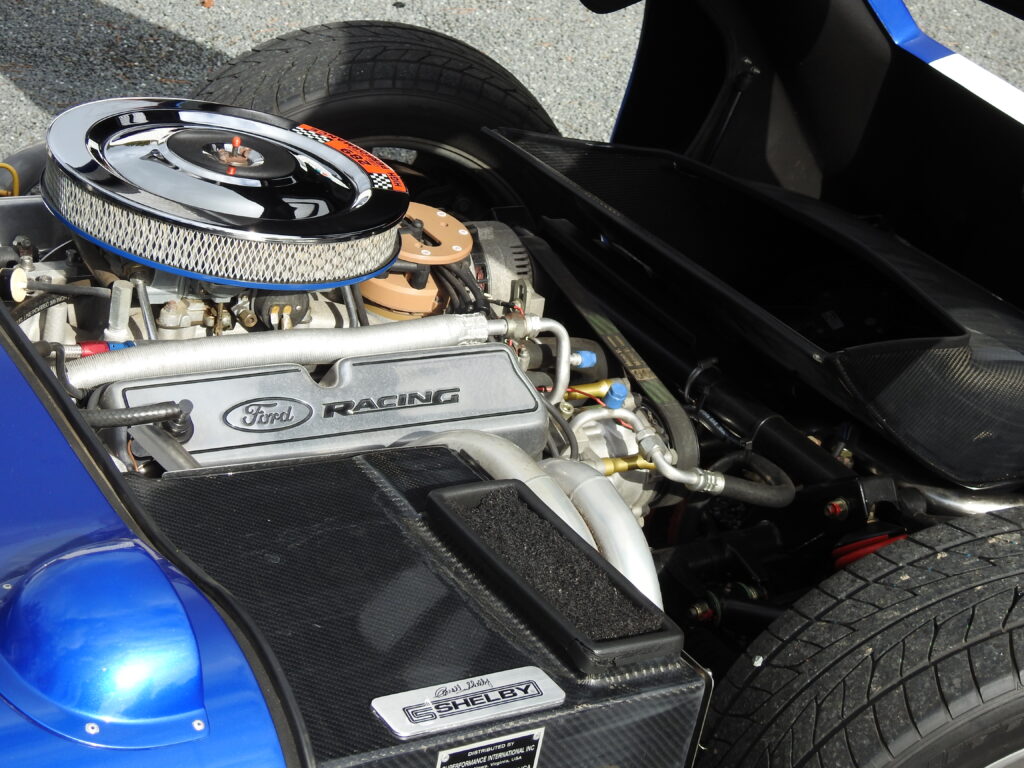
Local hero
I know of only one of these Superformance cars in New Zealand, located in the Waikato. The fit and finish of the panels are amazing. The leather and suede interior, with its high-backed electrically adjustable seats, would never be found in a race car. This example belongs to Bryan Buck. After years of building up an auto-dismantling company, Bryan finally had the means to buy the car he had always dreamed of owning.
By chance, after years of searching, Bryan saw a Superformance coupé come up for sale as part of a deceased estate. The price was better than reasonable, although, like all good buys, it had a couple of hitches. The first was that it was a left-hand drive, and the second was that it was in the USA. It had been imported into the US in 2007 by its first owner as an SPF Brock coupé. It appears to be the 37th one produced.
Under the bonnet of this example is a carburetted Ford Windsor 351 V8 (5.7-litre) producing 400bhp(298kW) — slightly more power than the original. Unlike the original, which had a four-speed manual to get all that power on the road, Bryan’s car has a six-speed Tremec gearbox, which allows him to use all the power when needed and save on petrol when he wants to drive a bit more sedately.
As stated earlier, the finish is exemplary; if I had to find a fault, it would be with the plastic rear screen. The windscreen and wind-up side windows are glass so it is a shame that Superformance did not go to the expense of manufacturing a glass rear screen. Everything else is as befits a high-quality tribute car. The fibreglass body is ripple-free, and the car has done only 17,000 miles since new.
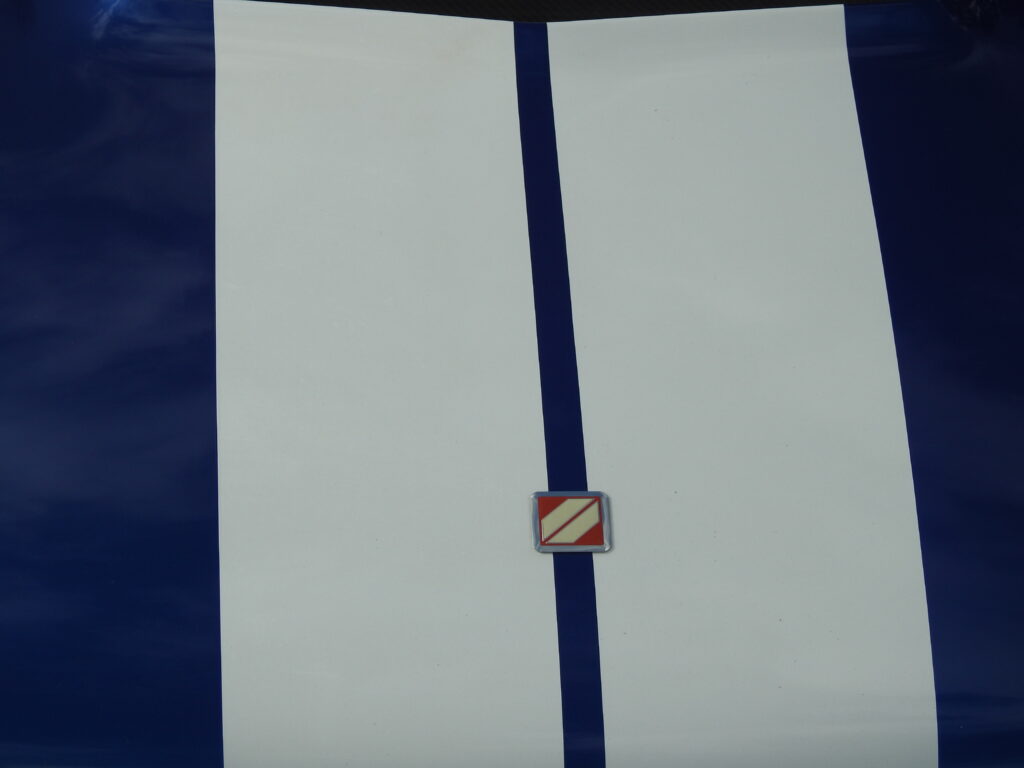
The road to road legal
The bank of toggle switches on the centre console looks just right on a car that owes its heritage to ’60s racing. A classic wiper switch is mounted in the middle of the console, while the more modern hazard light switch has been hidden to the right of the steering wheel on the dashboard. As this car was built prior to the partnership between Shelby and Superformance, all the badges and markings on the car are those provided by Superformance.
Bryan imported the car into New Zealand in 2020 and has started putting it through the LVVTA certification process. In New Zealand, every low volume production car that is imported is assumed to be a scratch-built, one-off car. Admittedly, once the first car has been through the system, it is easier for its identical cousin to get through the same certification process, as LVVTA keeps all the details of each certification on file. Generally, the most common sticking points are seat-belt mounting points and steering systems that are not OEM. Every kit car and homebuilt car manufactured in this country also goes through this process.
Hopefully, by the time you read this, Bryan will be adding to the miles by driving around some of the beautiful Waikato back roads in a street-legal car.
The original Daytonas were built only to be raced and did so successfully, going into the record books as being the first American car to win a European championship. Although the modern rendition can be raced, it is more at home on the open roads, swallowing miles in both comfort and style.
If anybody is interested in owning their own version of this legendary car, then LJ Performance Sportscars across the ditch in Victoria is the Australian agent for the cars.
